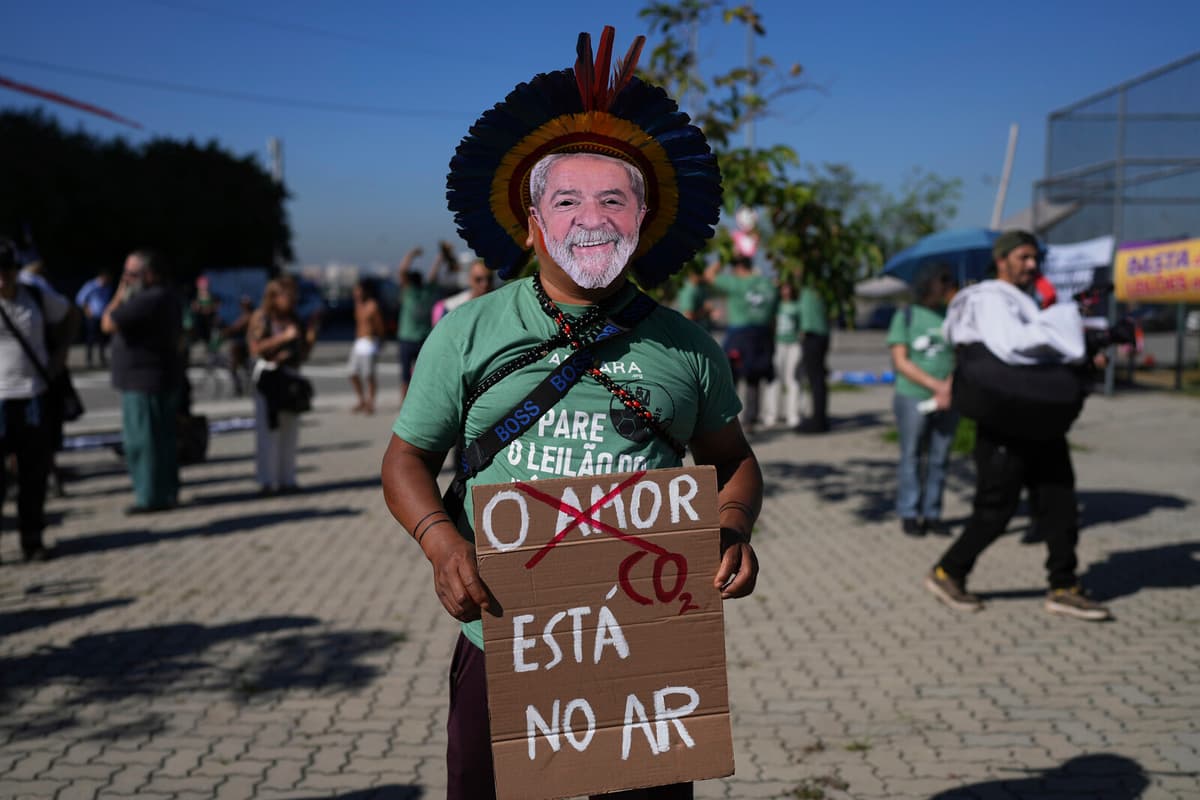172 oil blocks – areas where exploration and production of oil and gas are allowed – were auctioned off at a luxury hotel in Rio de Janeiro on Tuesday. The majority of the sites are currently untouched, including about 50 blocks at sea near the mouth of the Amazon River in the Atlantic.
Outside the auction, held by Brazil's state oil authority, hundreds of demonstrators gathered. The oil drilling poses a risk to the Amazon's sensitive ecosystem and the region's indigenous people, they warned.
We would have liked to be consulted and seen studies on how oil drilling can affect us. None of that has happened, said Giovane Tapura, a demonstrator from the indigenous Manoki people.
Lack permits
Brazil and President Lula da Silva want to expand oil production in previously untouched areas in the Amazon – and the big oil companies see the area as promising. Among Tuesday's buyers were mega-companies such as Chevron, Exxon Mobil, Petrobas, and CNPC.
The area at the mouth of the Amazon has not even received an environmental license for oil drilling yet.
It is regrettable and worrying that blocks are being acquired in a watershed that has not yet received environmental permits, says Nicole Oliveira at the environmental organization Arayara, who tried in vain to stop the auction in court.
"Risking everyone's future"
In the end, only 34 oil blocks were sold at the auction, which was part of the government's goal of increasing crude oil production. Last year, crude oil exports surpassed soybean exports for the first time, which had previously been Brazil's largest export commodity.
In November, the UN Climate Conference COP30 will be held in Belem, a major Brazilian city that is often called the gateway to the Amazon. Critics argue that President Lula is being hypocritical when he pushes for increased oil production while portraying himself as an environmental champion.
Brazil's government is risking everyone's future. Science has been crystal clear about the need to stop the expansion of fossil fuels worldwide, says Claudio Angelo at the climate coalition Climate Observatory.
Fact: Amazon
TT
The Amazon is a region around the Amazon River that contains the world's largest tropical rainforest. The majority of the area is located in Brazil, but parts of the area are also found in Colombia, Peru, Venezuela, Ecuador, Bolivia, Guyana, Suriname, and French Guiana.
Several indigenous groups live in the area, but it is sparsely populated. There is also a great diversity of species in the rainforest.
Since the late 20th century, large parts of the rainforest have been cleared. For example, parts have been cut down for timber, areas have been burned to make way for crops, mines, and highways, and areas have been flooded when dams were built for hydroelectric power. The cleared forest has little or no chance of regrowing.
In addition, oil production has penetrated deep into the Amazon. The indigenous people have been severely affected by the oil companies' infrastructure, oil spills, and pollution.
Source: National Encyclopedia, World Wildlife Fund





